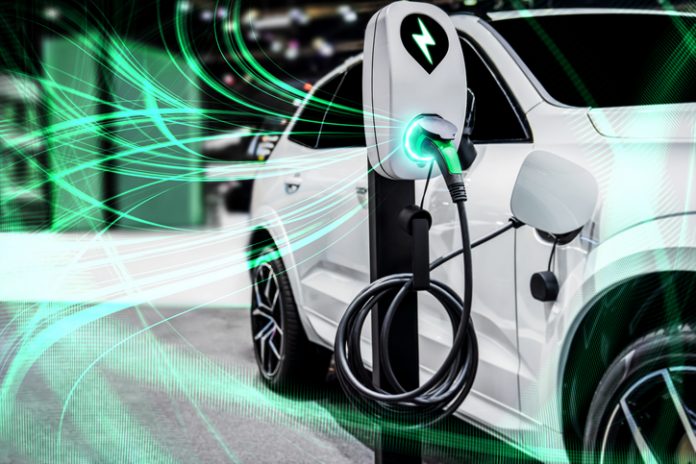(The Center Square) – The federal government’s electrified vision for the nation’s transportation sector needs a modernized power grid to support it – and experts say they need it now.
More concerning still, they say, upgrades aren’t on track to meet the Biden administration’s 2035 target for an electric vehicle takeover.
That’s because shoring up grid capacity, moderating the variability of renewable energy, and appeasing duplicative government regulations complicate the process, creating doubts about whether these goals are attainable at the scope and pace being set.
Robert Charette – a longtime systems engineer, contributing editor for IEEE Spectrum, and author of “The EV Transition Explained” – said simultaneously transforming the transportation and energy sectors “will involve a huge number of known and unknown variables, which will subtly interact in complex, unpredictable ways … and each proposed solution will probably create new difficulties.”
Lehigh Valley engineer James M. Daley, PE, a member of the IEEE Standards Association – with decades-long experience developing criteria addressing the interconnection of new energy technologies to the electric grid – told The Center Square that “variable renewable energy already has an impact on the resiliency of the national grid.”
“The introduction of EVs will only serve to exacerbate the issue,” he said.
It’s important, he said, to differentiate between renewable energy, or RE, and variable renewable energy, or VRE. For example, geothermal, nuclear, and hydroelectric are considered RE, whereas wind and solar are VRE.
The distinction between the two is made because wind and solar power are contingent on weather and atmospheric conditions, while other sources are constant sources of energy.
A dramatic demonstration of that system vulnerability, Daley said, occurred in Texas in 2021, when a winter storm severely impacted their wind turbines. The blades iced up, ceased to produce energy, and grid operators brought on their natural gas-fired turbine generators. With high demand for residential and commercial heating, the remaining supply was insufficient to make up for the loss of wind power – resulting in outages affecting millions of customers for days.
The Texas Department of State Health Services later confirmed 246 people died during the deep freeze, close to two-thirds of which succumbed to hypothermia.
Daley analyzed solar insolation data from 14 national weather stations from Maine to Florida, finding southern states have a 25% difference – a significant advantage – in harvesting solar energy. This should be kept in focus when deciding what form of renewable energy is to be harvested, he said.
Daley is one of an increasing number of people adding solar panels to their homes. He harvested almost 47% more energy than he used, but his utility company still had to provide 63.3% of his electricity.
“You harvest energy during the day when the sun is out, but you use energy 24 hours a day – so on rainy days and in the evening, your energy comes from the utility company,” he said.
Typically, energy harvested from renewable sources is used immediately, and not stored, so any excess is sent to the grid where it can be distributed to others. The utility company applies credits to your bill for that energy.
Swiftwater Solar, an 80MW facility awaiting approval in Monroe County, will encompass 476 acres and is estimated to provide power to approximately 14,000 homes. Daley says that’s a lot of virgin forest to lose.
There are debates over whether solar panels reduce carbon dioxide emissions more per acre than trees, and on other tradeoffs such as area aesthetics and loss of wildlife habitat. Offshore wind projects have also created controversy over their potential effects on marine life.
Daley said currently, the largest source of non-polluting energy is nuclear power.
Energy generation technologies are rated for their capacity – a measure of reliability, or how often a plant is running at maximum power. According to the U.S. Department of Energy, in 2021, nuclear plants were the highest rated at more than 92.7%.
Geothermal received a 71% rating; natural gas 54%; coal 49.3%; hydropower 37.1%; wind 34.6%; and solar 24.6%.
Creating energy is one issue, but the bigger problem is transferring it to the grid because transmission infrastructure needs a massive upgrade.
The DOE says that to meet growing clean electricity demands, transmission systems need a 60% expansion by 2030, and possibly tripled by 2050.
The department admits “building transmission is difficult, time-consuming, and hard to get over the finish line.” As a result, the large amount of potential clean power capacity is gridlocked due to wait times and costs of connecting to the transmission grid.
Alleviating the issue, they say, will require a collaborative, holistic approach, engaging other federal agencies, state and local governments, American Indian and Alaska Native tribal nations, industry, unions, local communities, environmental justice organizations, and other stakeholders. It will also require changes to transmission planning and generator interconnection processes.
Charette says any hope of having a carbon-free electricity grid by 2035 involves adding tens of thousands of miles of new transmission lines to the more than 600,000 circuit miles of existing alternating current (AC) transmission lines.
He cites a report showing that from 2010 to 2020, only 18,000 miles of new transmission lines were added to the grid, with only 386 added in 2021. Currently, there are only 5,000 miles on track for delivery between now and 2025.
Further, Charette adds, the local electricity distribution network needs to be upgraded as well, with new substations being built and tens of thousands of line transformers in need of replacement.
The proximate causes for the slow progress, he says, are numerous competing federal and state regulations that must be followed, as well as possible landowner objections. As a result, new projects can take a decade or more to complete, and often double or triple in cost – if they get built at all.
Daley said these challenges mean a 100% renewable energy future “will never happen.”
For more from Budget & Tax News.
For more public policy from The Heartland Institute.











